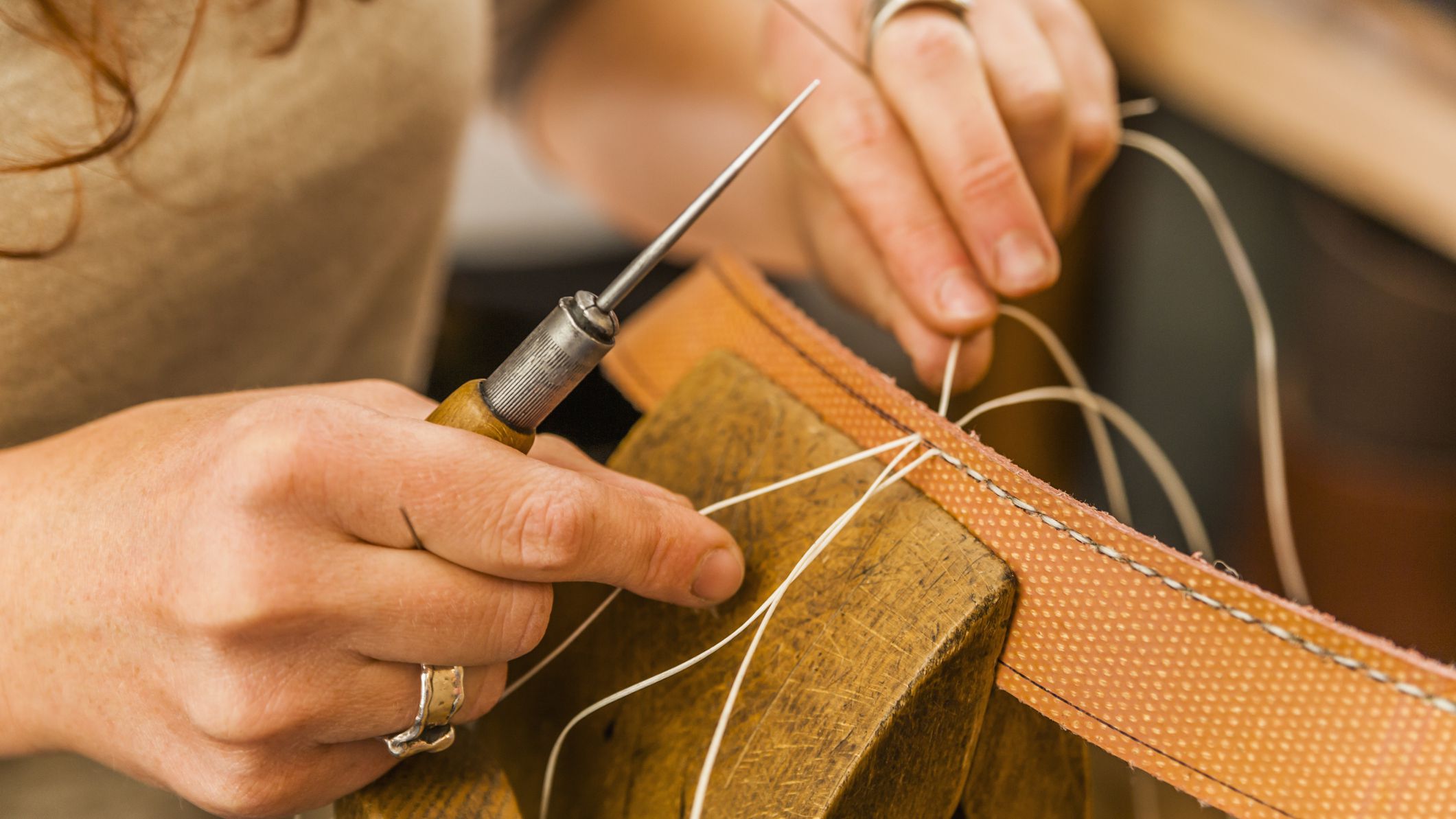It may seem that sewing is feminine pursuit. But dating back to the Paleolithic age, learning sewing was considered to be one of the basic survival skills. Sewing is not just about making decorative dolls but also putting different things together and making one piece of material for use.
You would have probably noticed that when you tear a seam on your clothing, you end up tearing 4 to 5 stitches. This is because the sewing method machine uses called ‘Lock Stitch’. Because of the lock stitch, when you tear on a stitch, it creates a chain reaction affecting other stitches.
Because of this chain reaction, people avoid this stitching method to sew leather. If you want to sew Leather products, we would recommend using the Saddle Stitch method.
The saddle stitch is ruggedly functional and can be easily done using some basic tools.
Whether it’s about repairing, fixing holes, or making a sheath for a hatchet, saddle stitch is the best solution. This article will discuss the steps you can take to sew leather by hand.
But before we start, we must know what tools are needed.
Tools Needed
- Thread preferably waxed.
- Two sewing needles.
- Sewing awl.
- Ice pick.
- Nails and hammers.
- Clips to bind two different leather pieces together.
- Fork.
- Pen or marker.
To illustrate the saddle stitching method, we will be using thick vegetable tanned leather. We are using thick leather because if you can use this method with thick leather, chances are you can use this method with any other leather.
Step-By-Step Guide To Sew Leather By Hand
Once you have all the tools, you can follow the steps to start sewing leather by hand.
Step 1: Preparing The Leather
When you are using your hand to sew leather together, one of the most challenging parts is to keep both pieces together. While you can get this done without a little bit of extra effort, you can always use assistance.
Here we will be using small clips to hold the two pieces of leather together. If you don’t have clips, you can use adhesives.
Start with the rough side together and keep the smooth sides out. Now align the outside edges and use the binder clip to hold the leather together. This will help you put holes effortlessly.
Step 2: Set The Spacing
While sewing leather by hand, it is important that you maintain equalling spacing. You wouldn’t want the uneven spacing to create problems once the final stitching is completed.
This is where you can take help from the fork we mentioned in the top section. The fork will help you maintain equal spacing.
Using a fork is only advisable when you’re working with thick leather. If you are working with thick leather, you can use the fork to market, but use a pen to mark the spacing.
Step 3: Creating Holes
A sewing awl is ideal for punching holes in the leather. But again, you might be limited to tools. In that case, you can always use an ice pick. You can use the ice pick to punch holes in both pieces together.
If that sounds too much work or you don’t even have an ice pick, you can always use a hammer and nail.
Step 4: Sewing
Now that we have our holes in place, prepare your thread. For this saddle stitch method, you need at least four times the distance or length you plan to stitch.
Start with putting your needle in one hole. After you have passed through the needle from the first hole, even out the thread on each side of the leather. Now add a needle to the other side as well.
Now you have two needles working on each. Now start stitching on the form of eight. After you completely cover all the holes, you will be left with tightly stitched leather.
Final Step: Lock The Stitch
Once you have completed stitching the leather, you would want to lock the stitches in their place. To do that, sew back a few stitches. Now cut the excess thread flush. Finally, burn the opening of the thread so that it does not come undone.
And that’s how you sew leather by hand.
In this article, we have covered only one type of stitching method. If you are interested in knowing, you can reach out to us. We will share more step-by-step guides on different stitching methods.

Leave a Reply